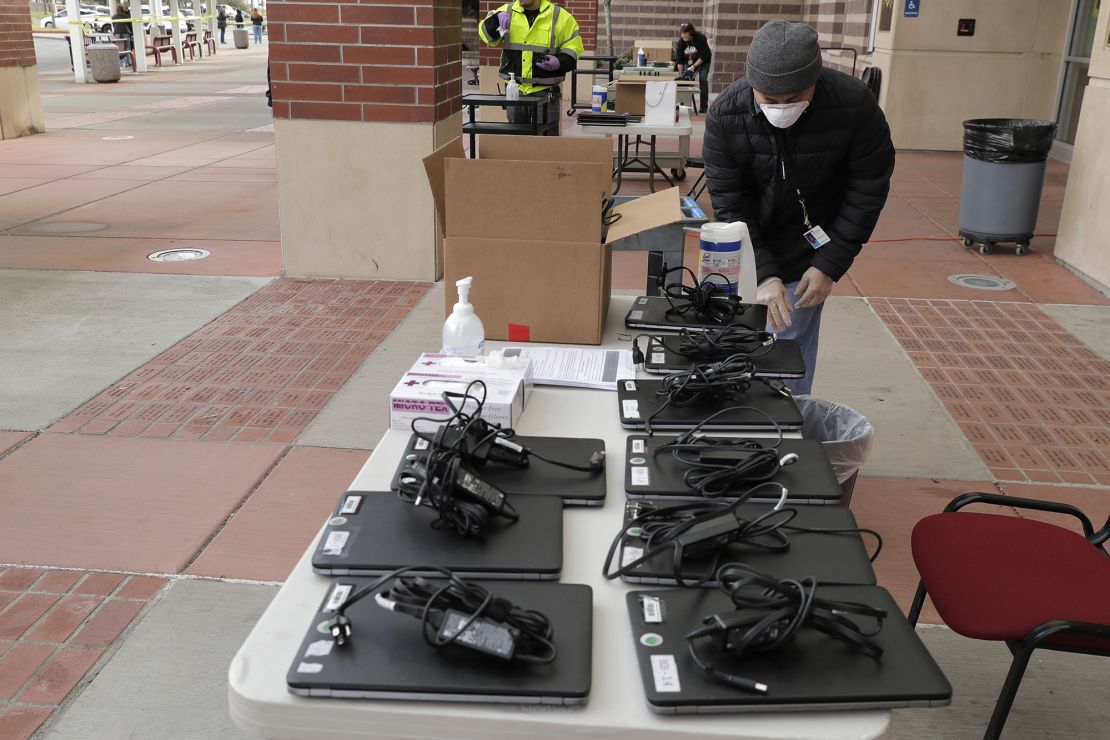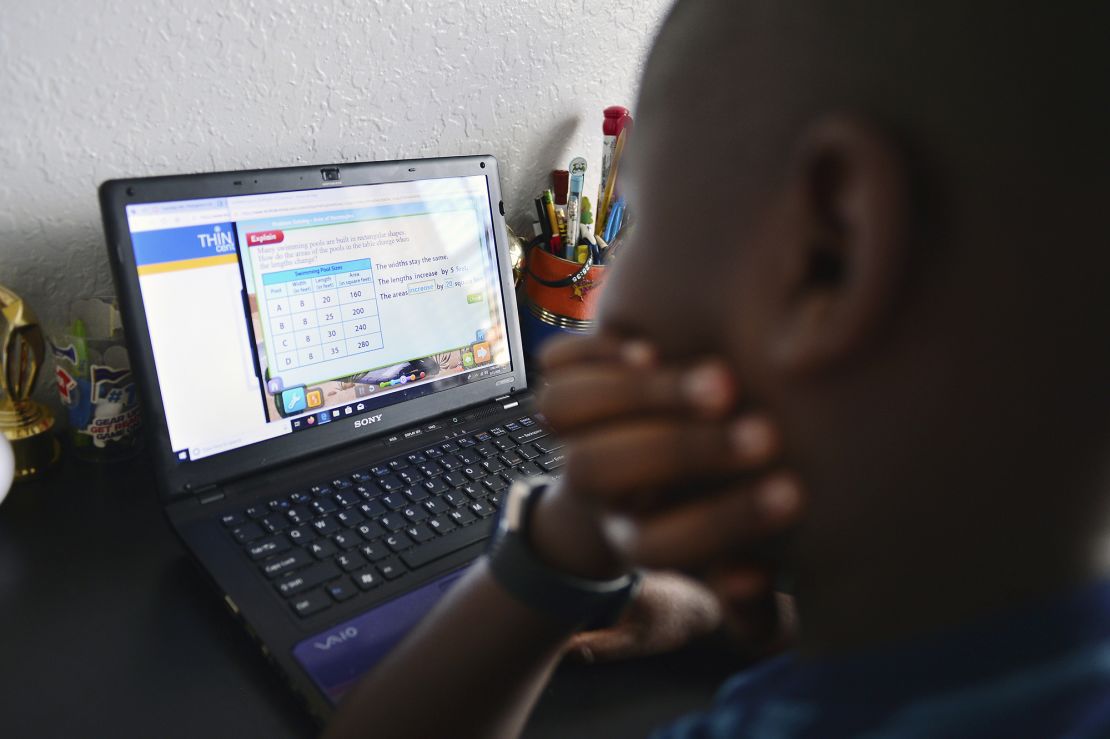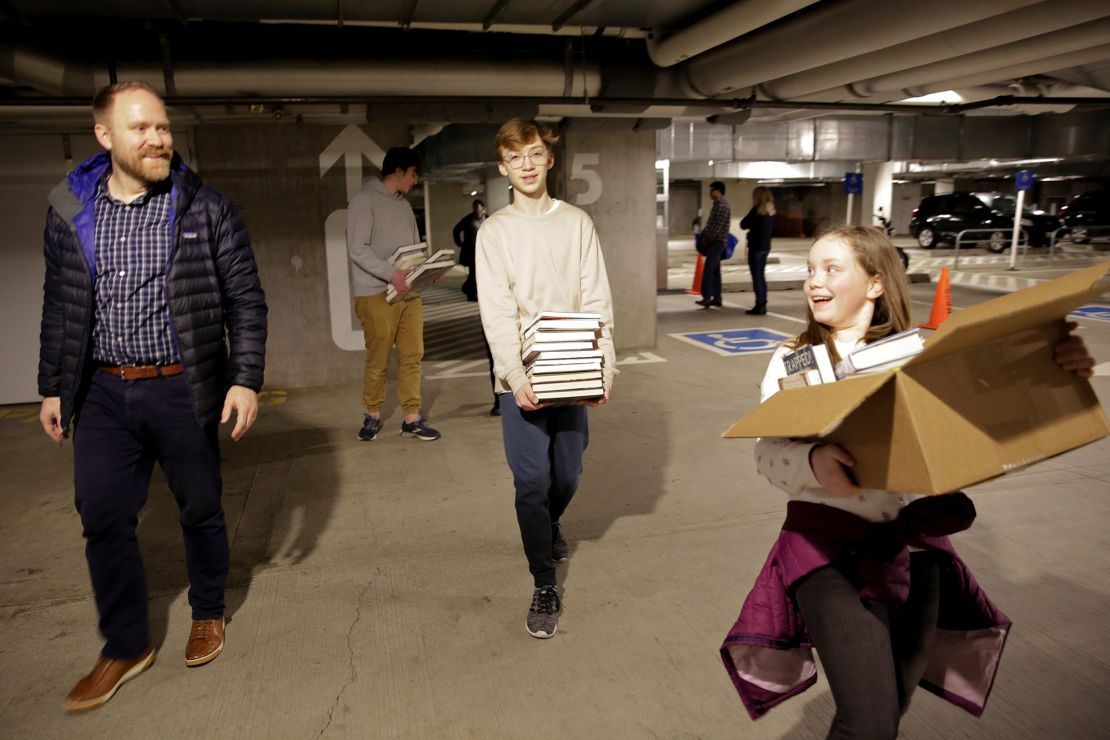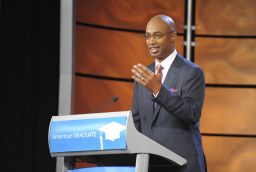Editor’s Note: Stefanie Sanford is chief of global public policy and external relations for the College Board, and Larry Irving is a former US assistant secretary of commerce during the Clinton Administration and a member of the Internet Hall of Fame.
Millions of American students won’t be heading back to the classroom this fall, at least not full time. From Los Angeles to New York, remote learning will continue into the fall.
That leaves a staggering number of students at risk of falling behind or dropping out. Up to 30% of schoolchildren — as many as 16 million American kids — lack internet access or laptops for online learning, a study by Common Sense Media and the Boston Consulting Group warned.
This isn’t just a problem for this fall. Missing months of learning will have catastrophic effects down the line. Students who have lost foundational skills will have trouble keeping up when school finally resumes, and they’ll be at greater risk of being held back, dropping out or failing to enroll in college.
The digital divide has been with us for decades, and we’re not going to solve it by August. But there is a tremendous amount we can do, right now, to save a generation of students from years of struggle.
Make it free

Millions of Americans can’t access broadband at any price because it’s not available where they live. Millions more simply can’t afford it, and that’s a problem we can solve quickly. In the next round of coronavirus relief legislation, Congress should fund wireless “hotspot” distribution by public schools and libraries. Lawmakers should also offer subsidies or vouchers for commercial internet service and require providers to honor them.
The same approach can work for laptops. Back when broadcast television switched from analog to digital signals, the Commerce Department distributed millions of vouchers for converter boxes. People took them to the store and walked out with the technology they needed. Surely, we could manage something similar on behalf of the nation’s schoolchildren.
We urge Congress to provide up to $6 billion for students and $1 billion for educators in the next round of coronavirus relief for broadband service and hardware, targeted to households that already qualify for other forms of federal assistance.
Make it a fast connection

Streaming classes, interactive coursework and other byte-rich content schools now require will overwhelm many standard data plans.
We can immediately bring gigabit internet to millions of students, for free, by tapping the high-speed connections in public buildings across the United States.
Put a broadcast antenna on top of every public library, every fire station, every agricultural extension office, every public housing complex and community college in America, and we can share their existing high-speed connections with the surrounding communities. We could add safety features like those used to block objectionable content on school networks and learn from anonymized data how students are actually using online education tools.
Make it good quality access

Internet access is the means, and delivering effective content is the goal. Last spring, many teachers were left scrambling to find digital resources. With more time to plan, educators and parents can tap higher-quality content that’s adaptable for online, classroom and blended learning.
One option is Khan Academy, a phenomenal resource that includes schedules to keep students ages 2 to 18 learning and resources for parents and teachers to track student progress.
Another is the Advanced Placement program’s highly flexible online system open to every teacher and student in AP, complemented this year by daily videos from some of the best teachers in the country.
Learning Heroes, an organization focused on providing educational resources to parents, offers readiness checks, daily activities and interactive videos to help parents figure out the basics of online learning.
Let’s study abroad
Schools have reopened from Japan to Denmark. What are educators finding about the gaps that emerged in student performance? How have they assessed learning loss and adjusted the curriculum to address it? Which online interventions seemed to work best?

Epidemiologists and virologists are collaborating across borders and sharing their findings much faster than normal. We need educators and academic researchers to adopt the same urgency, launch studies and share results rapidly. Governments, non-governmental organizations (NGO’s) and philanthropies should gather the best of what’s been learned across the world about supporting students in this crisis.
Get better data
Most educators don’t know what impact spring closures had on learning, or how students will respond to further disruptions in the fall.
Get CNN Health's weekly newsletter
Sign up here to get The Results Are In with Dr. Sanjay Gupta every Tuesday from the CNN Health team.
We won’t figure out what works unless we measure. We won’t know who needs added support unless we can see who’s struggling. Many states and districts understandably waived assessments last Fall, but as we look toward another year of disrupted schedules and online learning, we will need solid data to reveal inequalities and guide intervention. Pausing assessment is understandable but giving up on it only hurts students.
Tap the creativity of teachers
We’ll discover better ways to deal with learning loss, blended learning and online education by giving our most energetic and creative teachers extra resources to try new things. There are teachers all over the United States and around the world with innovative ideas about how to make the most of this difficult moment, and they deserve our support.
The US Department of Education should create a quick-turnaround grant program, modeled on the National Science Foundation’s Grants for Rapid Response Research, and open it up to any teacher in America. Big philanthropies — the Bill & Melinda Gates Foundation, the Walton Family Foundation, the Chan Zuckerberg Initiative — could do the same. Share the results quickly and widely.
Hire mentors
Online education only works if students engage, and many will need extra encouragement without a teacher looking them in the eye every morning. We need an army of mentors — another Works Progress Administration for a new century — to check in with students who aren’t logging on. With unemployment at historic highs, it’s a fine time to be hiring. Think of these people as educational contact tracers, tracking down at-risk students and stopping the spread of learning loss.
It’s easy to feel hopeless about the scale of the challenge we’re facing, or to assume that because no comprehensive solution exists, no solution is worth trying. But if we act now, we can still make an enormous difference for millions of our children.





